By CoinWeek…
Welcome back to our guide to building the ultimate 20th-century type set. In our last installment [Part One], we spelled out the basic principles of our type set strategy and focused on the most interesting small cent coins of the century. We went from rare doubled dies to early branch mint strikes, including the perennially popular 1909-S V.D.B.

In this installment, we turn our attention to nickels and dimes. And while they may seem to be easy types to collect at first glance, the two denominations can offer the serious collector a host of exciting challenges.
To recap our basic premise, we’re assembling the 20th century’s greatest coins by type. The goal is to present a challenge to the collector, but not make things impossible to complete. There are no one-off freaks or never-to-be-found rarities, but there are well-known and established collectible varieties, issues with tremendous upside, and surprising conditional rarities that, when assembled, will put your type set over the top.

Remember, just because the 20th century is still in the rearview mirror of most collectors, assembling a set of the century’s type coins doesn’t have to be boring and banal.
If you haven’t done it yet, be sure to check out Part One on cents – Part Two on Nickels and Dimes – Part Three on Quarters and Part Four is on Half Dollars.
Our guide selections may surprise you. Let’s take a look!
Liberty “V” Nickel (1901-1913)
The Scenario: Charles Barber, like his father William, wasn’t too pleased to see outsider George T. Morgan arrive to reshape American coinage in the mid-1870s. Unlike his father, who served as the nation’s Chief Engraver for 10 years and had only two circulating coins to show for it (the withdrawn trade dollar and the reverse of the failed twenty cent piece), Charles, over the course of 38 years at the helm, succeeded in producing a number of coins, including the eponymous Barber type dimes, quarters, and half dollars. From our aesthetic viewpoint, the least successful of the coins he authored was the Liberty Head nickel (1883-1913).
As a coin, Barber’s nickel was an improvement over Longacre’s Shield design. Its full-figured face of Liberty is reminiscent of the Morgan dollar type. The reverse features a vegetal wreath and the bold Roman numeral “V”. Unfortunately, it suffers from a flat appearance, and the hair detail on the so-called “Spaghetti” quarters of the 1990s have a precedent in Miss Liberty’s curly coif.
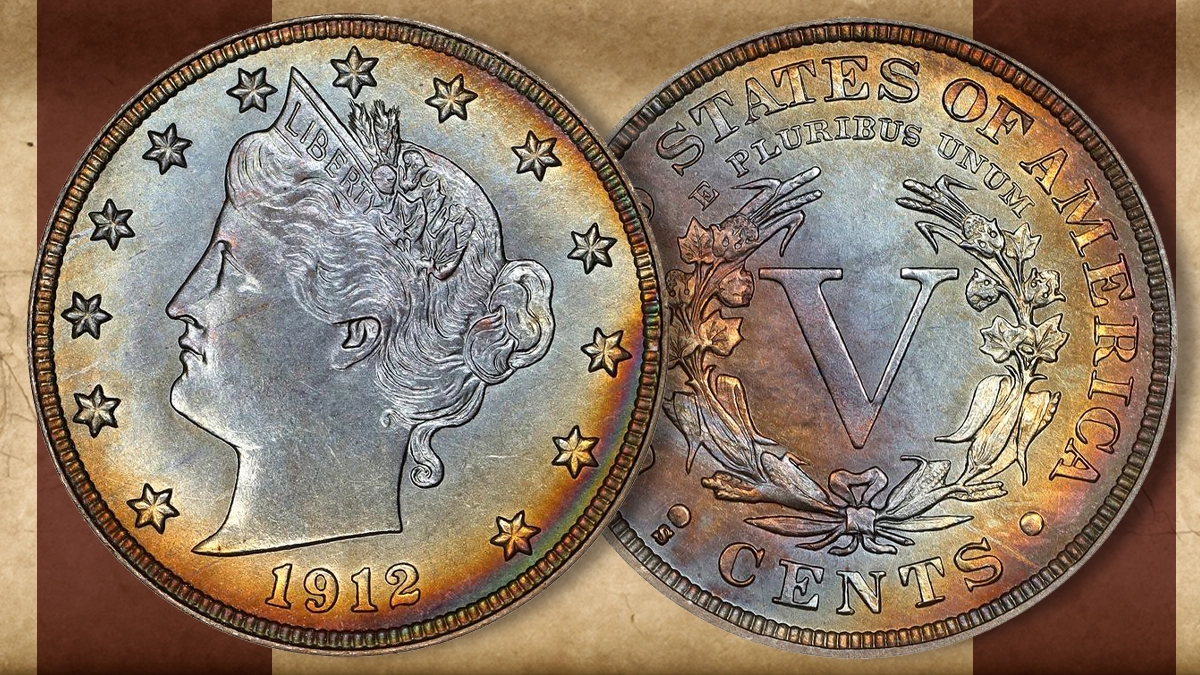
Guidance: In terms of scarcity, the 1912-S Nickel will never get the respect it deserves. Much scarcer than the 1909-S V.D.B. Cent in Mint State, this 20th-century key date is saddled with a series that has never been a collector favorite. That may not always be the case, however, as the Liberty nickel is one of the last classic series within reach of most intermediate collectors in Mint State.
As a type set collector, the 1912-S is a clear choice over Cameo or Deep Cameo Proofs (most of which have been cleaned over the years), or even the other branch mint issue, the 1912-D. A fresh roll of 1909-S V.D.B. cents was found, slabbed, and (mostly) distributed a few years ago. We can’t fathom a situation where such a concentration of the 1912-S survives unmolested in Mint State. An attractive MS-65 example now trades in the $2,800 to $5,000+ range, making it a serious, high-value component of the set.
Indian Head, or Buffalo Nickel Type 1 (1913)
The Scenario: The Indian Head (or as it’s commonly called, the “Buffalo”) nickel debuted in 1913, replacing Barber’s Liberty Head (“V”) type. The new type, designed by Saint-Gaudens acolyte James Earle Fraser, elevated the lowly five-cent denomination to the realm of medallic art thanks to a rustic design featuring a realistically rendered Native American figure on the obverse and an impressionistic portrayal of an American bison on the reverse. Unlike many other coins that pre-date this issue, Fraser used every conceivable measure of the canvas for his design. In doing so, he reduced the visual importance of the coin’s statutory inscriptions and mottos.
This proved to be one of the many problems that plagued the series throughout its release. Yet despite its troubled production history, the Indian Head nickel remains the quintessential five-cent coin, collected both for its rugged beauty and nostalgia.
The Type 1 nickel was produced in a cloud of controversy, and only for a few months. Die wear was the main issue, but the kicker was that the coin’s two most important features—the date and denomination—quickly rubbed off. Still, collectors wanting an example that most closely resembles James Earle Fraser’s original vision have but the P-D-S 1913 Type 1 issues to choose from.
Guidance: The 1913-S is easily the most desirable of the three Type I releases. It has the lowest mintage, and the estimated total number of Mint State survivors is a little less than half that of the 1913-D. The coin is easily purchased at MS-65 from all three mints, but an S-Mint example will set you back about $800 to $1,200 in that grade.
Another thing to consider is the luster and color. We’re suckers for nice color, and nickel tones up well—especially after 100 years. A beautiful piece with rich reds, golds, coppers, or blues will look great in your collection and will always find an eager buyer when it’s time to sell. Choose the most unique, high-quality example you can find, even if that means selecting a D-Mint or P-Mint over the scarcer S-Mint 1913 Type I. A top-end toned MS-66 can easily be found in the $2,000+ range.
Indian Head, or Buffalo Nickel Type 2 (1913-1938)
The Scenario: Due to wear issues on the dies and struck coins, the Mint had to make adjustments to Fraser’s design. The new type added a formal exergue under the bison’s hooves, wherein FIVE CENTS was struck up against the lower relief basined planchet instead of atop a raised relief mound. Because this type was struck for most of the duration of the issue, it’s the Indian Head nickel of record or at least the type that most of us remember. We have to admit, seeing the Type 1 after studying the Type 2 for so long can be jarring.
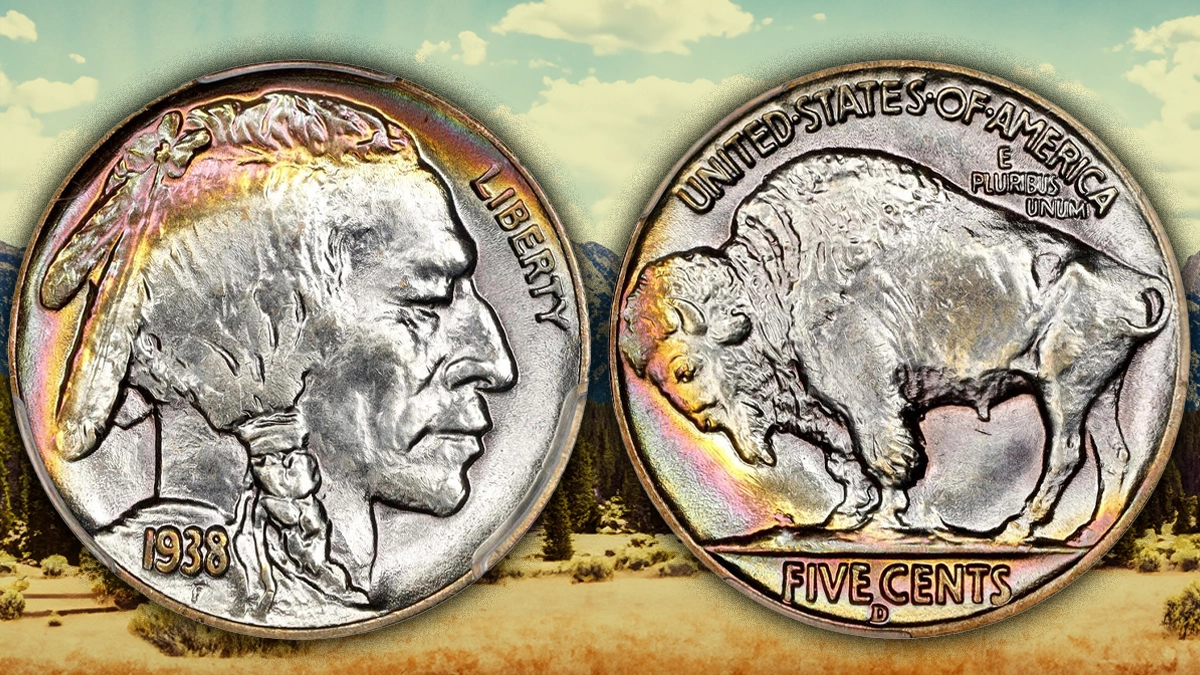
Guidance: We know it’s tempting, but please, please, please avoid the 1938-D. It’s the 1964-D of Buffalos. Sure it knocks out a coin from the list, but what fun is it to go for the coin that everybody has to sell you? Instead, look for pieces with real potential and a demonstrated history of collector interest.
If money’s no object, then buy one of several five- and six-figure pieces, like the 1926-S or the 1918/7-D variety. Or you could wait patiently for a 1913 proof to be offered for sale again. Of course, we’re partial to the 1937-D Three Legged Buffalo, which is what PCGS majordomo David Hall calls “the classic Buffalo nickel.”

Quite simply, the Type 2 Indian Head nickel is what we talk about when we talk about Indian Head nickels. It’s one of those coins—like the 1909-S V.D.B. cent and the 1916-D Winged Liberty dime—whose legacy extends far beyond numismatics and into the cultural consciousness. It’s the most important Buffalo nickel in the series and a coin you shouldn’t be without when putting together the ultimate type set. An MS-65 of the 3-Legged variety now sells for a significant premium, typically ranging from $20,000 to $30,000+.
Jefferson Nickel (1938-Present)
(For the purposes of our type set, we put the silver issues of 1942-1945 in their own separate entry)
The Scenario: The Mint, frustrated by wear and die issues related to the Indian Head nickel, wasted no time replacing the design once the statutory 25-year production period came to a close. The winning design, featuring President Thomas Jefferson, was chosen after a national competition.
While the production coin differed in significant ways from the artwork, many in the field were not impressed by either Schlag’s work or the finished coin. One point of contention was the head-on architectural motif (Monticello) that served as the reverse design. Some felt that architectural motifs were beneath the dignity of our national coinage. Still, Monticello remains on the reverse after all these years, and many other buildings and monuments have adorned American coinage since.
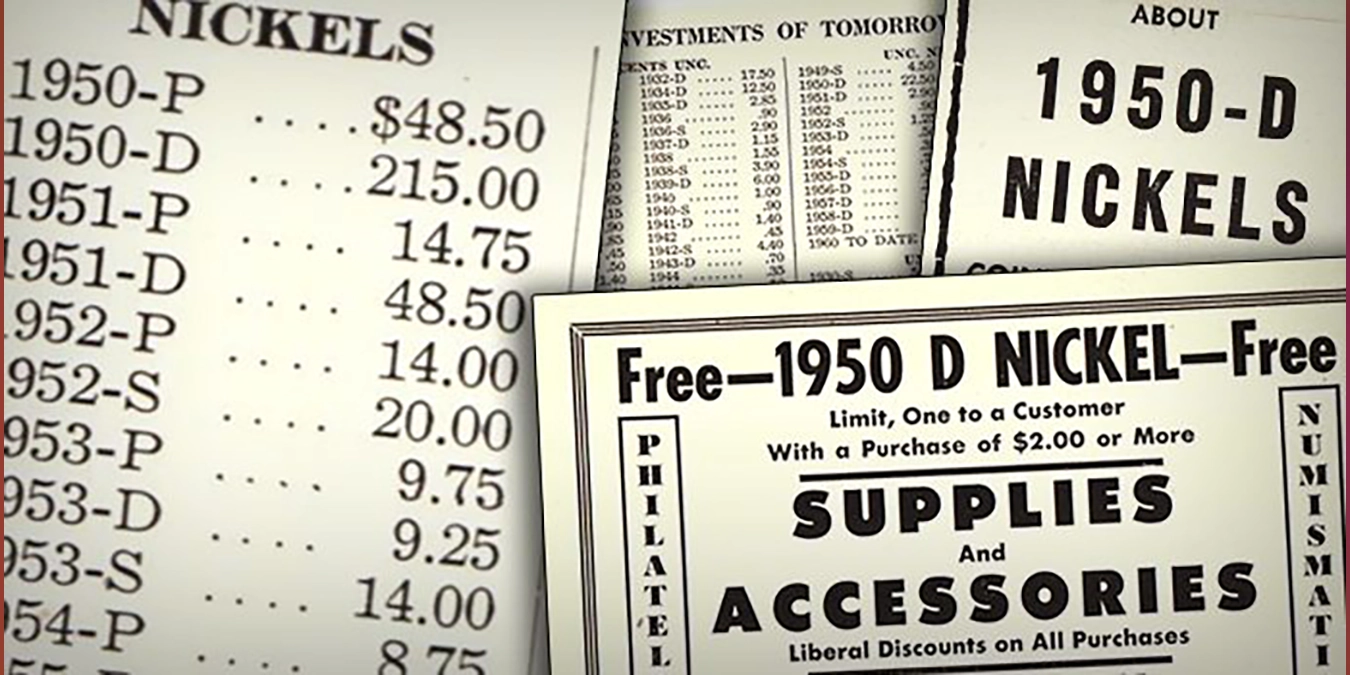
Guidance: Once upon a time, the 1950-D nickel was a can’t-miss investment. Collectors and investors were quickly disabused of the notion, however, when roll prices crashed after it was revealed that a majority of the issue was hoarded soon after its release. Because of this, the coin is more readily found in Mint State than Fair, which is the typical grade you’d expect for a circulating coin of this vintage.
Another collector- and dealer-driven phenomenon that affects the collecting of Jefferson nickels, at least on the high end of the modern market, is the strike quality attribution known as Full Steps (FS). Because of the discrepancy between the two major grading services (and the difficulty that even Jefferson nickel enthusiasts have to identify this feature), we advise that you stay away from any big dollar investment without proper representation by a nationally known dealer or expert in the series.

Luckily, our type set Jefferson nickel doesn’t require Full Steps to be interesting, challenging, or a potentially great investment coin. Our pick is the 1939 Doubled Monticello (Doubled Die Reverse). The coin exhibits bold, naked-eye visible doubling, and is one of but a few notable DDRs in the entire series. An MS-65 example trades for $1,400 to $2,000 and is steadily inching its way up in price.
The inclusion of a coin like this in your set will give you clear bragging rights and help others see an all-too-familiar coin in a whole new light.
Jefferson Nickel War Composition (1942-1945)
The Scenario: The need for nickel to produce steel for the war effort led to a change in composition for the “nickel” five-cent piece. The new alloy consisted of 35% silver, 56% copper, and 9% manganese. While the new alloy didn’t perform as well as the metal it replaced, the Jefferson design never looked so striking as it did between 1942 and 1945. The softer metal made full strikes with minimal marks common. Gems are plentiful, and it’s not uncommon to find examples in MS-66 and MS-67.
For the most part, war nickels were extracted in the 10-15 years after World War II. The coin’s large mint marks aided in their removal. The coins were also heavily hoarded, which means there are no absolute rarities of this type.

Guidance: While the delineation between Full Step and non-Full Step Jefferson nickels becomes much easier during the war years, we still see sidestepping the issue as a possibility when it comes to finding the ultimate example for your set. In this case, we have another doubled die: the 1943-P DDO (Doubled Die Obverse).
This prominently doubled nickel is naked-eye visible and shows dramatic doubling on Jefferson’s eye and in the mottos and inscriptions. Through MS-66, the coin isn’t that big of a deal—a non-DDO example can be had for $40 to $80. The 1943-P DDO in MS-66 is a conditional variety and trades for around $400 to $600. If you’re lucky, you might even find an excellent example in the wild for a fraction of that.
If Full Steps is your thing, there are fewer of these known, and the collector premium is certainly in effect, with pieces graded MS-66 selling for upwards of $2,000. But the coin comes so well-struck anyway that paying such a large price difference for such a minimal boost in quality isn’t something we suggest doing without knowing the Jefferson nickel market and its players very well.
Barber Dime (1901-1916)
The Scenario: Charles Barber, like other Chief Engravers before and after, lived to see the day when the Nation felt his coinage was no longer needed. Though they believed him capable, his superiors decided that Barber the younger—like his father before him—lacked the artistic vision necessary to elevate the nation’s coinage. Whereas 1913 (well, technically 1912) saw the end of Barber’s nickel design, 1916 saw the wholesale change of Barber’s signature circulating coins: the dime, quarter, and half dollar.
For what it’s worth, Barber’s coinage might bear his name, but its inspiration comes from George T. Morgan’s dollar design and also borrows from the Variety IV Seated Liberty dime reverse. Barber died in 1917, after which Morgan took the reins as Chief Engraver.
Guidance: Much maligned over the years, Mint State Barber coinage has seen a resurgence in recent decades. It’s now somewhat scarce in most dates and downright rare in others. Unlike Barber’s Liberty nickel, the Barber dime was produced at regular intervals at the branch mints. This means that besides coins struck in Philadelphia, you have pieces representing New Orleans, San Francisco, and, starting in 1906, Denver.
The most notable 20th-century dime from this series is the 1905-O Micro O variety. Widely believed to have been created accidentally using a mintmark punch intended for quarter dies, this dime is extraordinarily rare in Mint State. Today, it’s estimated that upwards of 20 might exist. PCGS has graded four.
Expect to wait on Mint State specimens. Also, expect stiff competition from other collectors. In MS-63, the coin should trade between $7,000 to $10,000+. In MS-65, that price can double and possibly triple. A notable collector’s MS-65 example sold at a 2005 Heritage Auction for $12,650, a price that would be substantially higher today for the same coin. PCGS has graded only one coin finer. The top pop MS-66 is hard to put a number on, but it would easily trade well into the five-figure range.
If the hunt for a 1905-O Micro O isn’t your bag, consider the 1901-S, the 1903-S, or the 1904-S. All offer a challenge to find nice attractive examples, and all have strong upward potential due to their scarcity and the popularity of classic S-Mint coinage. The 1904-S is the toughest of the three to find in MS-65 or above. The 1901-S has the lowest mintage.
Winged Liberty (Mercury) Dime (1916-1945)
The Scenario: While there was no Congressional mandate to change coin designs in 1915, plans were underway to change out the dime, quarter, and half dollar—all three designs credited to sitting Chief Engraver Charles Barber. In terms of artistry, Adolph Weinman’s Winged Liberty dime and Walking Liberty half dollar were revelations. The former has long been an icon of American Numismatics, while the latter was repurposed for the American Silver Eagle, the “Morgan dollar” of the 20th and 21st centuries.
Guidance: Adolph Weinman’s popular Winged Liberty Head dime is most widely collected in circulated grades or by date, but assembling the complete series in Mint State can be prohibitively expensive, especially the 1916-D, the 1921 and 1921-S, and the 1926-S. All four of these coins trade for more than a thousand dollars in MS-63 or better, and the 1916-D, being a five-figure coin in MS-63, can cost as much as a luxury sedan in MS-65 or better. The popular 1942/1 variety (P and D) are also five-figure coins in Mint State due to their elusiveness in uncirculated grades.
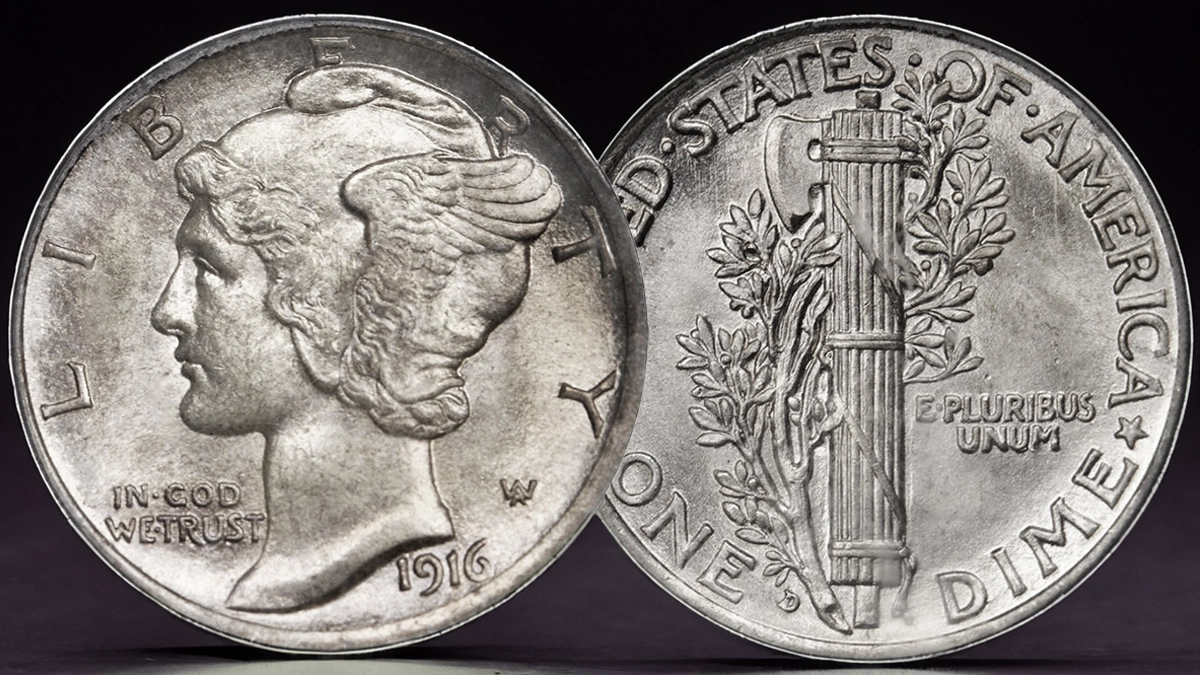
If you have bottomless pockets, the 1916-D is the coin to get. Its value has tripled in the past 15 years while keeping its established and unwavering reputation. In terms of absolute scarcity, the 1916-D dime is one of the rarest 20th-century coins in Mint State, and with an estimated uncirculated population of under 100 coins, its future growth potential seems to be wide open. An MS-63 example now trades for approximately $19,000 to $25,000+. Consider that there is more than two and a half times the number of unimpaired proof 1895 Morgans, and you begin to have an idea of just how few 1916-D uncs are out there.
Roosevelt Dime Silver (1946-1964)
The Scenario: Franklin D. Roosevelt’s memorialization on the dime seems a thing of destiny. The President, stricken with polio in 1921, and his close friend Basil O’Connor established the March of Dimes in January of 1938. The charity sought small donations from millions of Americans to fund research to defeat the infectious disease. So connected was Roosevelt to the charity that his appearance on the dime was all but assured after his death.
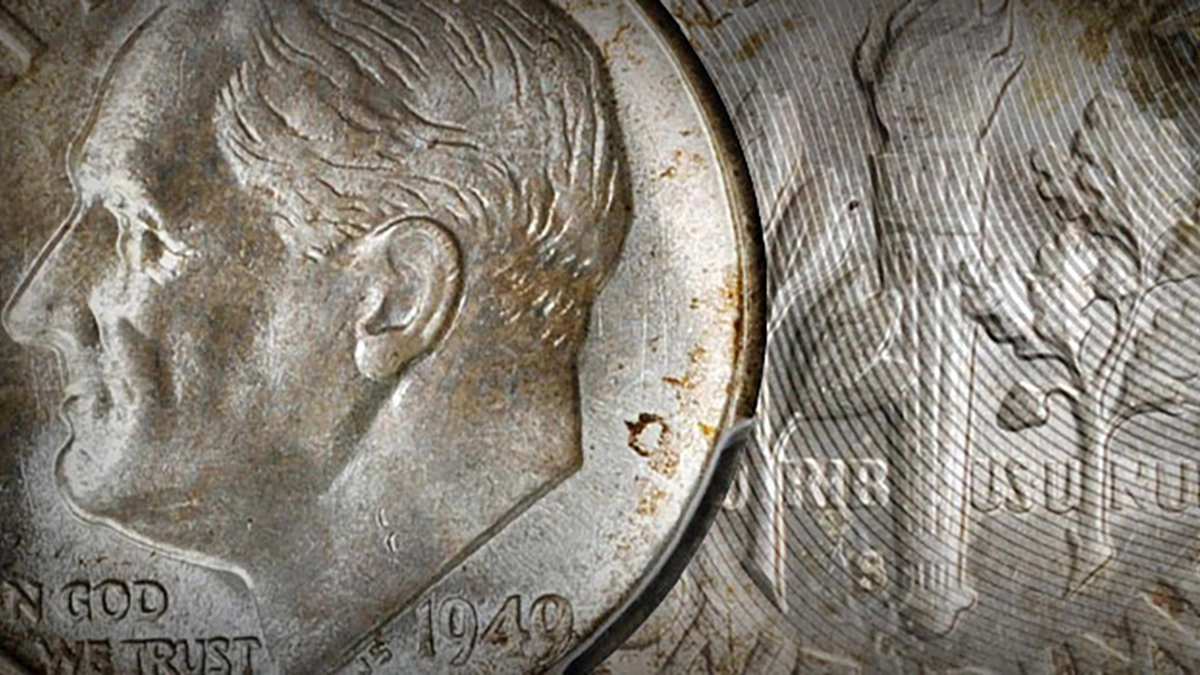
We’ll leave it up to you to decide whether the Roosevelt dime was a warranted replacement for the Winged Liberty dime. One thing we are sure of is that few could have anticipated that the “new” coin series would continue well into the second decade of the 21st century.
Guidance: As with the clad dime, there are no back-breaking issues in the silver portion of the Roosevelt dime series. Some like to point to the 1949-S as the regular issue “key date” of the series, but that’s just silly. As mintages go, the 1955-P was produced in lower numbers, and neither issue is exactly difficult to come by in Mint State.
There are, of course, innumerable varieties to think about. Any of the Cherrypicker’s varieties would be a more interesting pickup than the 1949-S.
However, the truly desirable coin (to us) is a frosty 1950 or 1951 proof. The latter is spectacularly scarce in Deep Cameo (DCAM); the former nearly as much. The time will come when cameo coinage from the 1950s will take off in value, and these are two issues with relatively well-established populations. A 1950 Proof DCAM in PR-66 now trades for approximately $350 to $550, and a PR-67 DCAM would be well over $1,000.
Roosevelt Dime Clad (1965-Present)
The Scenario: Clad Roosevelt dimes went into production in 1965, and were produced side-by-side with 90% silver dimes through the year 1966. In 1968, the Mint began mint marking dimes again. Your typical clad dime set resides in a coin folder or album, and relatively few collectors actively seek out top-shelf, fully struck clad dimes.
But this, too, will change. We’ve already seen increased demand for 1965 Full Band dimes in gem plus grades. Other dates remain elusive. Still, the Roosevelt dime at the top level is not being sold in a free and competitive market.
Guidance: We set our stakes around five possible periods where a key date dime would emerge. We focused on the 1969 and 1975 Philly strikes, the 1965 to 1967 Special Mint Set era business strikes, the 1982 and 1983 non-mint set business strikes (specifically the 1982 “No P”), and the 2005-2010 business strikes.
For the sake of the article, we omitted proof issues, particularly the “No S” varieties, but we must consider them here. While the 1968 and 1975 “No S” proofs can be relegated to the pipe dream category due to their ultimate rarity, the 1970 and 1983 “No S” dimes have known populations of approximately 500 coins each.
In terms of telling the “story” of the clad Roosevelt period, the 1982 “No P” stands out as the most compelling choice. Again, it’s a non-mint set year, which means most 1982 dimes have been spent or lost. It also benefits from being a variety coin, one that’s about as scarce as the 1955 Doubled Die cent. An MS-65 example trades for approximately $400 to $800. If it were our set, we’d go with the “No P,” but any of these three accidental releases are worth your consideration and collector dollars.
Flip of a Coin:
- Why Do They Hate Us?: The 1955 Franklin half dollar was struck, not to fill demand (there was none, as the Treasury had sufficient stores on hand), but to ensure that the 1955 would not be a proof-only issue. Growth in demand for proofs was exploding year after year, and Mint officials were concerned that a proof-only half dollar would spur even higher collector and speculator demand for proof sets.
- Yeah, But How Do You Say It?: One of the more difficult terms in numismatics to spell is “Akcidefect.” The term was coined by M. L. Beistle in the late 1920s to describe clash image marks in his groundbreaking book The Register of Half Dollar Die Varieties and Sub-Varieties (1929).
- No study of the New Orleans Mint is complete without some attention paid to a man named John Leonard Riddell (1807-1865). Riddell was a Renaissance man in every sense of the word except literally; he was an inventor of note, a duty-bound and effective public official, and a scholar. His A Monograph on the Silver Dollar (1845) remains essential reading to this day, due to its first-hand account of the widespread circulation of Mexican counterfeits of United States coins, a key issue leading to the creation of the Coinage Act of 1857.
The post Building the Ultimate 20th-Century Type Set, Part 2: Nickels and Dimes appeared first on CoinWeek: Rare Coin, Currency, and Bullion News for Collectors.
